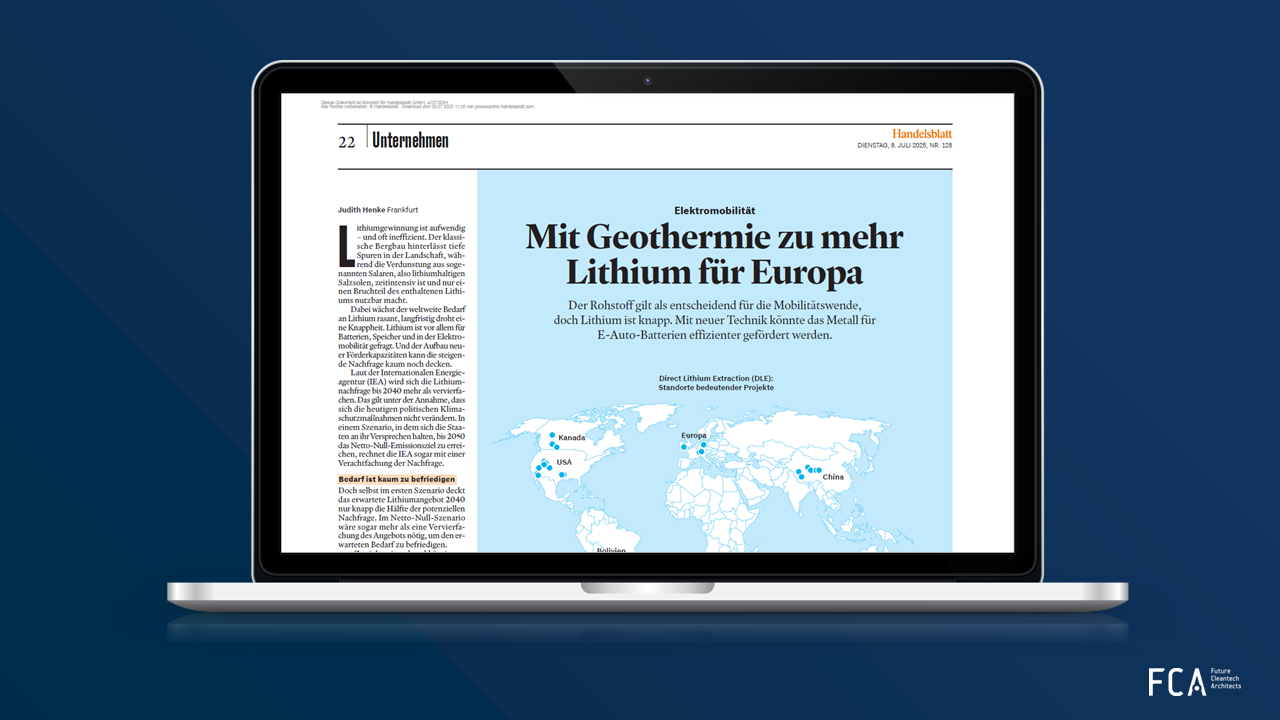Global demand for lithium is growing rapidly, and a shortage is looming in the long term. According to the International Energy Agency (IEA), lithium demand will more than quadruple by 2040. It is particularly in demand for batteries used in electric mobility and stationary storage. And the construction of new production capacities can barely keep up with the increasing demand.
Meeting this demand is almost impossible. “Regardless of the extraction technology, lithium extraction itself must first increase significantly,” says FCA’s Senior Cleantech Analyst Rene Severens in a new article in Handelsblatt, the largest and most-cited business and financial newspaper in the German language.
More and more companies are betting on a new method: Direct Lithium Extraction (DLE). Four DLE extraction processes are promising: aluminate-based adsorption (which selectively binds lithium ions), ion exchange (a subcategory of adsorption, where lithium ions are exchanged for hydrogen ions), solvent extraction (where lithium ions are pulled out of the salt water into an oily substance using extractant molecules, after which the oil is separated from the water solution), and membrane filtration (where lithium ions pass through tiny channels, while other substances remain behind).
“The choice of method, as well as other circumstances, will determine whether the chosen extraction method is more environmentally friendly and whether it is more financially attractive,” explains Severens.
Learn more about different methods of direct lithium extraction and their benefits and challenges in Handelsblatt (in German, paywall).
This article is the latest in the series “Green ideas that might change the world” that Handelsblatt and Future Cleantech Architects co-developed to shed light on some of the most intensively debated cleantech innovations. We are pleased to provide scientific guidance to the series. Stay tuned for new releases!

